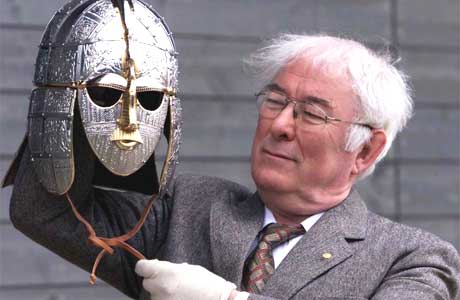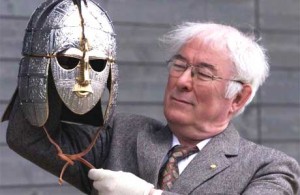
Here’s an imaginal excerpt from a wonderful, long profile by Robert McCrum of the great Irish poet Seamus Heaney. It’s Heaney’s response to McCrum’s question (the most common question asked of every poet, I think): “Where does poetry come from?”
“I think it comes from all the other poetry that’s there,” [Heaney] replies. “I think that a relationship with something else is called for — all the other poetry that’s around, or the culture, or the times, or your clique — and it calls the poetry out of you.” Is there someone who does this? “To get started, what starts you?” he wonders. “You can call it the muse, but it’s excitement, the beloved. Certainly, there’s a kind of quickening.” He begins to describe this excitement. “There is a physical need. I need to feel a purchase on something. I used to say that it was like a bite on the line, or a tug. With me, the purchase is a ‘thingyness’ or a ‘memoryness’ “. Now he’s becoming slightly Delphic, and I sense we’re drifting into some ancient Celtic cave.
“It really comes out of – from the side… Like a ball kicked in,” he goes on, speaking of this private moment with a tangible, strange reticence. “It’s rather risky. I don’t keep a notebook. I’m superstitious. I always felt that if I started to be assiduous about it, and looked for it, then it might go away. Or I would turn into a different kind of writer.”
You see what the imaginal reduces even the greatest of writers to! “Thingyness.” “Memoryness.” Our everyday perceptual language is never really up to it — to capturing the imaginal. And yet the imaginal drives the poem. It’s what Dylan Thomas described as “the force that through the green fuse drives the flower.” I mean that the imaginal isn’t just a human thing: it offers itself up everywhere.


 Joseph Hutchison, Colorado Poet Laureate 2014-2019, has published 20 collections of poems and edited or co-edited three poetry anthologies. He currently directs two master’s-level programs for University College at the University of Denver: Professional Creative Writing and Arts & Culture Management. Joe lives with his wife, Melody Madonna, in the mountains southwest of Denver, Colorado, the city where he was born.
Joseph Hutchison, Colorado Poet Laureate 2014-2019, has published 20 collections of poems and edited or co-edited three poetry anthologies. He currently directs two master’s-level programs for University College at the University of Denver: Professional Creative Writing and Arts & Culture Management. Joe lives with his wife, Melody Madonna, in the mountains southwest of Denver, Colorado, the city where he was born. 










True.